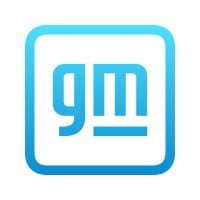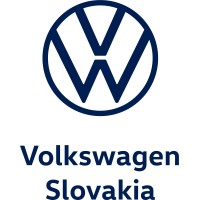Company Cyber Security Posture
NANA
NA Company Details
NA
NA
NA
NA
NA
NA
Scan still pending
NA
NA
Between 200 and 800
This score is AI-generated and less favored by cyber insurers, who prefer the TPRM score.
 NA Global Score
NA Global Score.png)

Company Scoring based on AI Models
| Model Name | Date | Description | Current Score Difference | Score |
|---|---|---|---|---|
| AVERAGE-Industry | 03-12-2025 | This score represents the average cybersecurity rating of companies already scanned within the same industry. It provides a benchmark to compare an individual company's security posture against its industry peers. | N/A | Between 200 and 800 |
Company Cyber Security News & History
| Entity | Type | Severity | Impact | Seen | Url ID | Details | View |
|---|
Company Subsidiaries

NA
Access Data Using Our API

Get company history
.png)
NA Cyber Security News
MAHLE Aftermarket to present itself as a full-service provider for workshops at Automechanika
MAHLE Aftermarket is presenting itself at Automechanika as a global, full-service provider for independent workshops.
Autopromotec 2025: a platform for innovation, comparison and growth in the automotive sector
A not-to-be-missed event that will bring together professionals, companies, institutions and researchers to explore the challenges and opportunities of an ever ...
Leading National Security/Cybersecurity Partner Karl Hopkins & Team Join Bradley
Mr. Hopkins brings broad experience advising clients on C-suite-level organizational resiliency, security and cybersecurity issues, as well as ...
Technology and Innovation Exchanges: Securing Mobile Network Infrastructure
Was this page helpful? Yes. No. This page was not helpful because the content. has too little information. has too much information. is confusing. is out-of- ...
MAHLE Launches New Generation of Workshop Diagnostic Tools
Easy to understand. Easy-to-understand icons and video tutorials make operation easier and guide you through the diagnostic process in a self- ...
NASTF Fall Meeting Looks at Cybersecurity, J2534
The benefits listed include include programming speed, device validation and device management and challenges include long lead times, ...
Mahle offers Mercedes-Benz encoded OBD access
Mahle and Daimler AG have settled an encoded OBD access deal for Mercedes-Benz vehicles. As a result, users of the MAHLE TechPRO or Brain ...
MAHLE Sells its Industrial Filtration Activities to Filtration Group
MAHLE has sold its industrial filtration activities to the filtration specialist Filtration Group Corporation, headquartered in Chicago, US.
Snapshot: S&T is Enhancing the Autopsy Digital Forensics Tool
It supports all types of criminal investigations—from fraud to terrorism to child exploitation. As an open-source platform, it is a cost- ...

NA Similar Companies

General Motors
General Motors’ vision is to create a world with Zero Crashes, Zero Emissions and Zero Congestion, and we have committed ourselves to leading the way toward this future. Today, we are in the midst of a transportation revolution, and we have the ambition, the talent and the technology to realize the

Michelin
Michelin is a world-leading manufacturer of life-changing composites and experiences. Pioneering materials science over more than 130 years, Michelin is uniquely positioned to make decisive contributions to human progress and a more sustainable world. Drawing on technological leadership in polymer

DENSO
DENSO is one of the world's largest automotive suppliers of technology and components found in almost all vehicles around the globe – Toyota, Honda, Stellantis, General Motors, Ford, Volvo, Mercedes-Benz, to name a few. Our 24,000+ North American team members collaborate to support a greener and saf

Volkswagen Slovakia
Volkswagen Slovakia je najväčším automobilovým producentom v Slovenskej republike. V súčasnosti má na Slovensku dva závody, situované v Bratislave a Martine. Volkswagen Slovakia s.r.o. bol založený v roku 1991, produkcia sa rozbehla začiatkom roka 1992. Závod v Bratislave je jedine

Lear Corporation
Lear, a global automotive technology leader in Seating and E-Systems, enables superior in-vehicle experiences for consumers around the world. Our diverse team of talented employees in 37 countries is driven by a commitment to innovation, operational excellence, and sustainability. Lear is Making eve

Cummins Inc.
At Cummins, we empower everyone to grow their careers through meaningful work, building inclusive and equitable teams, coaching, development and opportunities to make a difference. Across our entire organization, you'll find engineers, developers, and technicians who are innovating, designing, testi

Frequently Asked Questions
Explore insights on cybersecurity incidents, risk posture, and Rankiteo's assessments.
NA CyberSecurity History Information
How many cyber incidents has NA faced?
Total Incidents: According to Rankiteo, NA has faced 0 incidents in the past.
What types of cybersecurity incidents have occurred at NA?
Incident Types: The types of cybersecurity incidents that have occurred include .
Additional Questions
What Do We Measure?
















Every week, Rankiteo analyzes billions of signals to give organizations a sharper, faster view of emerging risks. With deeper, more actionable intelligence at their fingertips, security teams can outpace threat actors, respond instantly to Zero-Day attacks, and dramatically shrink their risk exposure window.
These are some of the factors we use to calculate the overall score:
Identify exposed access points, detect misconfigured SSL certificates, and uncover vulnerabilities across the network infrastructure.
Gain visibility into the software components used within an organization to detect vulnerabilities, manage risk, and ensure supply chain security.
Monitor and manage all IT assets and their configurations to ensure accurate, real-time visibility across the company's technology environment.
Leverage real-time insights on active threats, malware campaigns, and emerging vulnerabilities to proactively defend against evolving cyberattacks.




